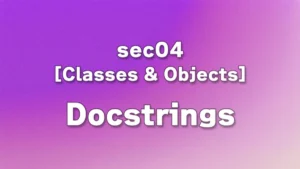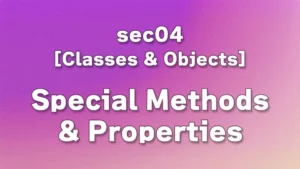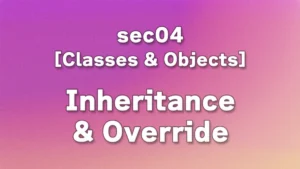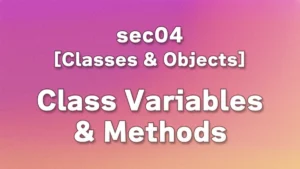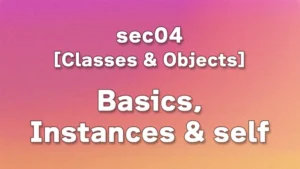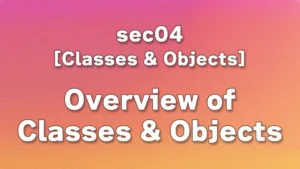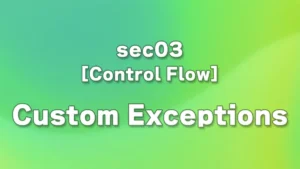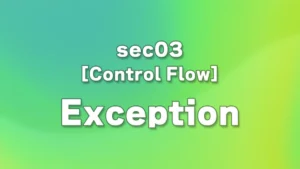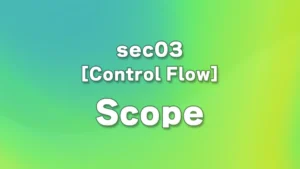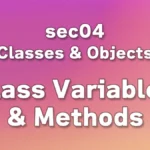Python101.tech is a completely free web-based learning resource.
Lectures in Python 101 start from installing and configuring Python and a text editor. The course is structured for systematic learning and is designed to provide the knowledge required to ultimately build a UI tool called "Directory Maker."
* This site is under active development; new posts are published approximately every 2–3 days. Updates may be delayed when the site maintainer is busy.
Table of Contents(目次)
New
Curriculum
sec00 - Setup
sec01 - Variables & Data Types
Variables
- sec01 - Assigning to variables
- sec01 - Variable naming rules (1)
- sec01 - Variable naming rules (2)
- sec01 - Overwriting variable values
Numbers
- sec01 - Integers [int] and Floating point numbers [float]
- sec01 - Arithmetic and operators
- sec01 - Augmented assignment operators
- sec01 - Operator precedence
- [Column] Complex expressions
- sec01 - Converting between int and float
- sec01 - round() function
- sec01 - math module (mathematical functions)
Strings
- sec01 - Strings (String)
- sec01 - Escape sequences
- sec01 - Raw strings, triple quotes, and other string notations
- sec01 - String operators and casting
- sec01 - String indexing
- sec01 - String slicing
- sec01 - String methods
- sec01 - String formatting [Overview]
- sec01 - format() method basics & usage
- sec01 - f-strings: basics & usage
- sec01 - Format specifiers
sec02 - Data Structures
list
- sec02 - list overview
- sec02 - list slicing
- sec02 - Editing lists
- sec02 - list methods
- sec02 - Copying lists (1)
- [Column] Python variable and data management
- sec02 - Copying lists (2) [type() and id()]
tuple
- sec02 - tuple overview
- sec02 - tuple slicing
- sec02 - Editing tuples and tuple methods
- sec02 - Copying tuples
dict
set
- sec02 - set overview
- sec02 - Union, intersection, difference, symmetric difference
- sec02 - Subset, superset, and disjoint sets
- sec02 - set methods
- sec02 - Copying sets
Type conversion & Unpacking
sec03 - Control Flow
if statements
for & while loops
- sec03 - for Loop Basics
- sec03 - Looping over Collections
- sec03 - range() Function
- sec03 - continue, break, else
- sec03 - Useful functions for for loops
- sec03 - while loops
- sec03 - Nested Loops
Functions
Exception handling
sec04 - Classes & Objects
- sec04 - Overview of Classes & Objects
- sec04 - Basics, Instances & self
- sec04 - Class Variables & Methods
- sec04 - Inheritance & Override
- sec04 - Special Methods & Properties
- sec04 - Docstrings
sec05 - Modules and Packages
- sec05 - Introduction: Modules and Packages Basics
- sec05 - Chapter 1: Fundamentals of Python Modules and import
- sec05 - Chapter 2: Script Execution Mechanism: __name__ and Namespaces
- sec05 - Chapter 3: Module Search Mechanism: The Role of sys.path
- sec05 - Chapter 4: The Principle of Separation of Concerns
- sec05 - Chapter 5: Implementing Exception Handling
- sec05 - Chapter 6: Adding Docstrings
- sec05 - Appendix 1: Practical Importing: Absolute vs. Relative Imports and Error Handling
- sec05 - Appendix 2: Module Name Conflict Risks: Verifying import Priority by Environment
- sec05 - Appendix 3: Defining Package API: __init__.py and __all__
Instructor Environment
- Windows 11
- Python (3.13.5)
- Visual Studio Code
Students may follow the course using different environments.
Behavior differs between Python 2 and Python 3. If you work in an older environment, test your code thoroughly to ensure it behaves as expected.
If you use macOS or Linux, please consult the installation instructions for Python appropriate to your OS.
You may use any text editor. The course demonstrates examples using Visual Studio Code, a free and widely used editor.
Notes
- This site is under active development; updates may be delayed when the maintainer is busy.
- While articles are written with care regarding Python behavior, changes in Python or undiscovered bugs may alter behavior over time.
- Behavior can also vary depending on the operating system (e.g., macOS or Linux).
- The site maintainer is not responsible for any losses resulting from running Python code.
- When using Python in product development, always test to confirm the behavior and results are as expected.
- If you find typos or incorrect information in articles, please notify us in the comments section of the relevant page.
